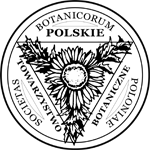Abstract
The process of weed development in a sugar beet field was followed under the climatic conditions of mideastern Poland in 1977. The sugar beet was cultivated on loess soil and weeded using two methods: mechanical and chemical (Pyramin 5 kg/ha just after sowing). The results of the study revealed a specific developmental rythm of the particular weed species on each of the weeded objects. The lise of the herbicide delayed the germination of weeds and limited their repeatability, eliminated sonic species from the weed community as well as delaying the start of generative development of some weeds. It also decreased the participation of the fruit and seed shedding phase of the weeds before harvest of the cultivated crop.






